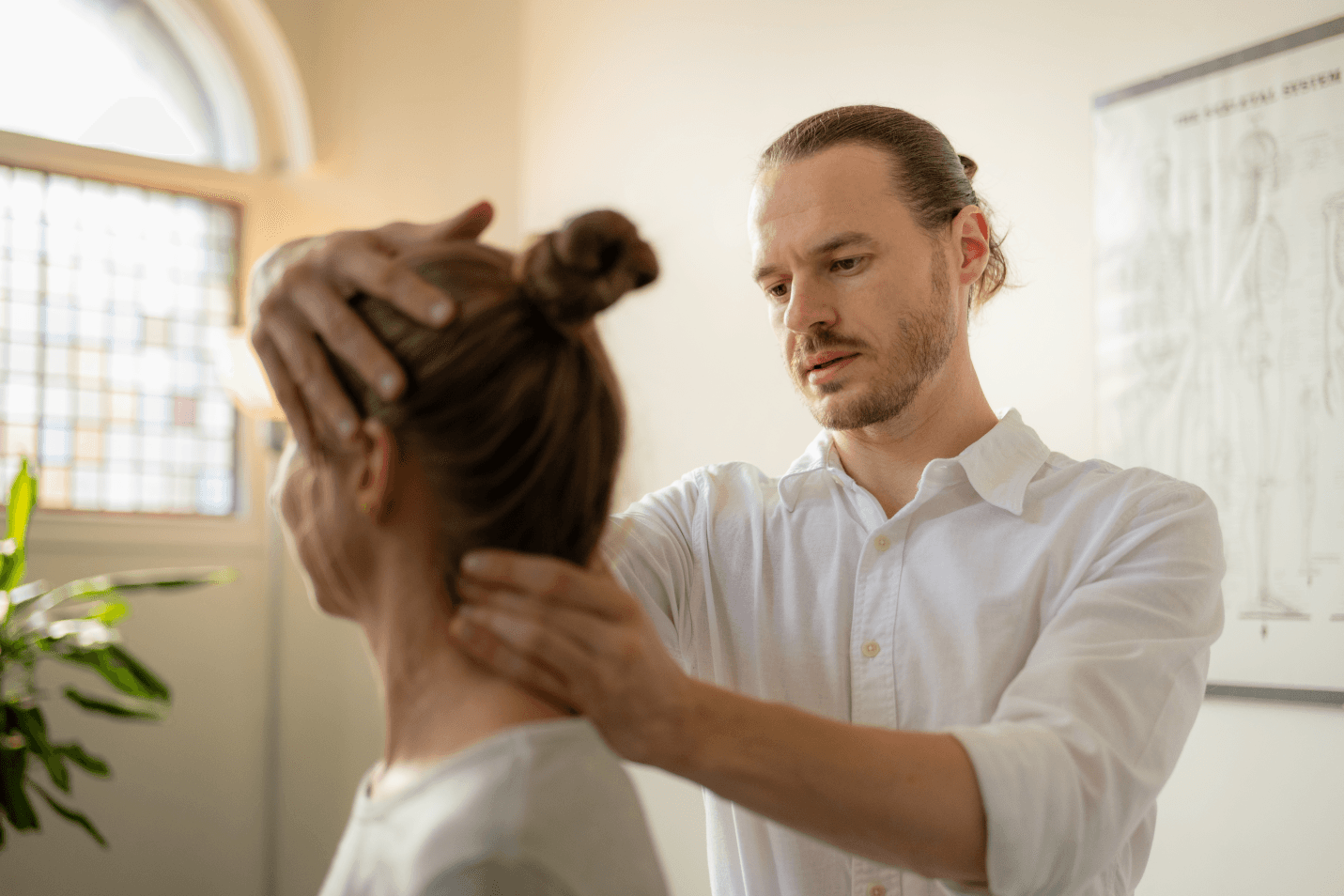Neck Pain
Understanding Neck Pain: A Biomechanical Perspective
Neck pain is a widespread issue that can range from mild discomfort to debilitating stiffness or restricted mobility. Often attributed to poor posture, stress, or injury, the underlying causes of neck pain are deeply rooted in the body’s biomechanics. By examining how the cervical spine interacts with the rest of the body, we can uncover the key contributors to neck pain and take proactive steps to alleviate and prevent it.
The Biomechanics of Neck Pain
The cervical spine is a remarkable structure composed of seven vertebrae, intricately linked to muscles, ligaments, and nerves. It supports the weight of the head, which averages around 5 kilograms, while maintaining flexibility for movement. However, this mobility and responsibility make it especially vulnerable to dysfunction.
Postural misalignments—such as the forward head position caused by prolonged desk work—place excessive strain on the cervical spine, compressing joints and overstretching muscles like the upper trapezius. Over time, this imbalance can lead to chronic pain, stiffness, and reduced range of motion. Additionally, ascending stress patterns from poor foot mechanics or the jaw further burden the cervical region, amplifying dysfunction.
The tensegrity model offers valuable insight here. As a dynamic structure, the body relies on a balance of tension and compression forces to maintain stability. When one element, such as the cervical spine, compensates for stress elsewhere, it becomes prone to overuse, fatigue, and eventual pain.
Compensatory Patterns and Their Consequences
The human body is highly adaptive, compensating for weaknesses to protect itself from injury. For example, if the core lacks stability, the neck may compensate by tensing its muscles, resulting in discomfort over time. Similarly, dysfunctional movement patterns originating in the shoulders, upper back, or pelvis can ripple upward, manifesting as neck pain.
Unfortunately, compensatory patterns often persist long after the initial stressor is resolved. This creates a cycle of inefficient movement and chronic pain, emphasizing the need to identify and address the root causes of dysfunction rather than merely treating symptoms.
Chiropractic Care for Neck Pain Relief
Chiropractic interventions when done with a biomechanically informed perspective create solutions for managing neck pain. Specific adjustments restore motion to restricted cervical segments, relieving strain and allowing the spine to function more effectively. Soft tissue therapies reduce tension in overactive muscles, improving balance and mobility in the neck and surrounding regions.
Holistic assessments go beyond the neck itself, addressing contributing factors such as poor foot mechanics, core weakness, or jaw tension. Tailored exercises focused on posture correction and cervical stability complement these treatments, promoting long-term resilience and efficiency in movement.
Preventing Neck Pain
When guided by biomechanical principles, interventions for neck pain transcend short-term relief, becoming tools for prevention. Early identification and correction of compensatory patterns reduce the likelihood of chronic dysfunctions. This functional approach is suitable for everyone, from desk workers to athletes, helping to build a foundation for sustained, pain-free mobility.
Neck related Conditions
Cervicogenic (cervico 'neck', genic 'origin') Headaches (caused by muscular or joint dysfunction of the neck).
Migraines.
Whiplash.
Cervical Spondylosis (degeneration of the joints in the neck).
Cervical Facet Syndrome / Meniscoid (sprain of the facet joint).
Discogenic Pain Syndrome.


